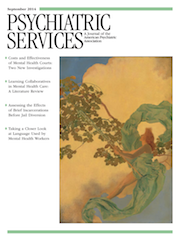Racial-Ethnic Disparities in Use of Antidepressants in Private Coverage: Implications for the Affordable Care Act
Abstract
Objective
The objective of this study was to examine racial-ethnic disparities in the use of antidepressants among people with private coverage and people with public insurance or no coverage.
Methods
Data were from Medical Expenditure Panel Surveys (2006–2010), and logistic regression was used for the analysis.
Results
Among persons with depression and private coverage, racial-ethnic minority groups were significantly less likely than non-Hispanic whites to use antidepressants (N=4,468; adjusted odds ratio [AOR]=.50, 95% confidence interval [CI]=.33–.66 for non-Hispanic blacks; AOR=.70, CI=.55–.89 for Hispanics). No significant racial-ethnic disparity in the use of antidepressants was found in Medicare (N=1,944), Medicaid (N=2,125), and uninsured populations (N=1,679). For all racial-ethnic groups, persons with no insurance coverage had much lower rates of antidepressant use than their insured counterparts.
Conclusions
A wide racial-ethnic gap in the use of antidepressants existed in private coverage. As the nation continues to implement the Affordable Care Act, which will increase the number of enrollees from racial-ethnic minority groups in private plans, continuing efforts will be needed to reduce racial-ethnic disparities in the use of antidepressants.



